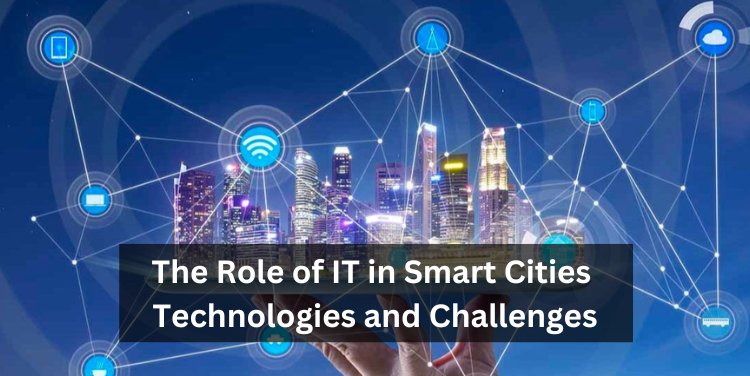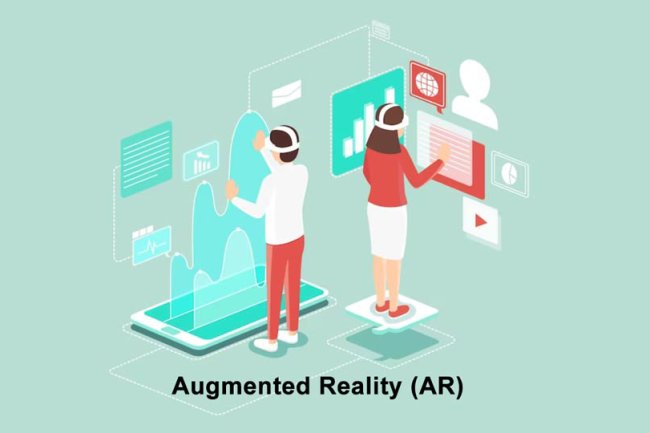The Role of IT in Smart Cities: Technologies and Challenges

The rapid growth of urbanization across the globe has brought about new challenges for cities. Issues like traffic congestion, pollution, waste management, and inefficient infrastructure have become major concerns. In this context, Information Technology (IT) is playing an instrumental role in transforming traditional cities into smart cities—urban environments that leverage digital technologies to enhance the quality of life, improve efficiency, and address sustainability challenges.
A smart city is essentially a connected city that uses IT, data analytics, and innovative technologies to streamline operations, manage resources, and provide better services to its citizens. By incorporating digital systems and smart infrastructure, cities can solve some of their most pressing problems, while ensuring a high standard of living for residents.
Key Technologies in Smart Cities
The backbone of any smart city lies in its technological infrastructure. Several cutting-edge technologies are driving the development of smart cities, helping to create connected, efficient, and sustainable urban environments.
-
Internet of Things (IoT): The Internet of Things (IoT) is one of the most crucial components of a smart city. IoT connects various devices—ranging from traffic lights to water sensors—that can communicate with each other and provide valuable data. This data can be used to monitor air quality, detect waste levels, and manage traffic flow. By integrating IoT devices, smart cities can improve decision-making in real-time.
-
Artificial Intelligence (AI): AI plays a key role in processing the vast amount of data collected from IoT devices and other sources. With AI, smart cities can predict patterns, optimize traffic, energy use, and even assist in emergency response systems. For instance, AI can analyze traffic data to predict congestion and suggest alternate routes, or it can be used in managing energy grids to ensure efficient power distribution.
-
Big Data Analytics: The accumulation of data from various sensors and devices across the city provides valuable insights. By analyzing big data, city officials can understand trends and patterns that help in better urban planning, infrastructure maintenance, and resource management. For example, analyzing transportation patterns can help optimize bus routes and reduce traffic jams.
-
5G and Connectivity: The implementation of 5G networks is a game changer for smart cities. 5G promises faster speeds, lower latency, and greater reliability in communications between devices. This improved connectivity ensures that smart devices in the city can operate smoothly and in real-time, enhancing the overall functionality of a smart city.
-
Geographic Information Systems (GIS): GIS technology allows for mapping and analyzing spatial data, making it an essential tool for urban planning and management. With GIS, city planners can track the location of assets like roads, buildings, and utilities. GIS also aids in disaster management and emergency response by providing real-time information about weather patterns and traffic conditions.
Challenges in Implementing Smart Cities
While the potential benefits of smart cities are immense, the transition to a fully smart city comes with its own set of challenges.
-
Cybersecurity and Privacy Concerns: The vast amount of data generated by smart city technologies presents significant privacy and security concerns. Protecting sensitive citizen data from cyberattacks and ensuring that personal information is not misused is a major challenge. Smart cities need to establish robust cybersecurity frameworks to safeguard against breaches.
-
High Costs and Investment: Developing and implementing smart city technologies requires significant investments in infrastructure and human resources. The cost of upgrading existing infrastructure, installing IoT devices, and implementing AI systems can be a major barrier for many cities, particularly in developing regions.
-
Digital Inclusion: As cities become more technologically advanced, it’s essential to ensure that all citizens, regardless of socioeconomic status, can benefit from smart city technologies. This includes ensuring access to the internet, affordable devices, and digital literacy programs. Without digital inclusion, smart cities could inadvertently create a digital divide.
-
Integration of Systems: Integrating various smart city technologies and systems can be a complex task. Different technologies often use different standards, making it difficult to create a unified platform. Collaboration among public and private sectors, as well as standardized protocols, is crucial for the seamless operation of smart cities.
The Future of Smart Cities
Despite these challenges, IT continues to play a transformative role in shaping the cities of the future. As technology evolves, the potential for smart cities to address urban challenges will only grow. Smart cities can provide more sustainable solutions for managing traffic, reducing energy consumption, improving waste management, and enhancing public safety.
By integrating IT into urban planning and governance, cities will become more responsive to the needs of their citizens. Furthermore, as technologies like AI, IoT, and 5G become more affordable and accessible, more cities will be able to embrace the smart city model.
In conclusion, the role of IT in smart cities is critical to achieving the goals of sustainability, efficiency, and improved quality of life. As cities continue to grow, embracing these technologies will ensure that they can thrive in the future, meeting the demands of a rapidly changing world while enhancing the well-being of their residents.
What's Your Reaction?















